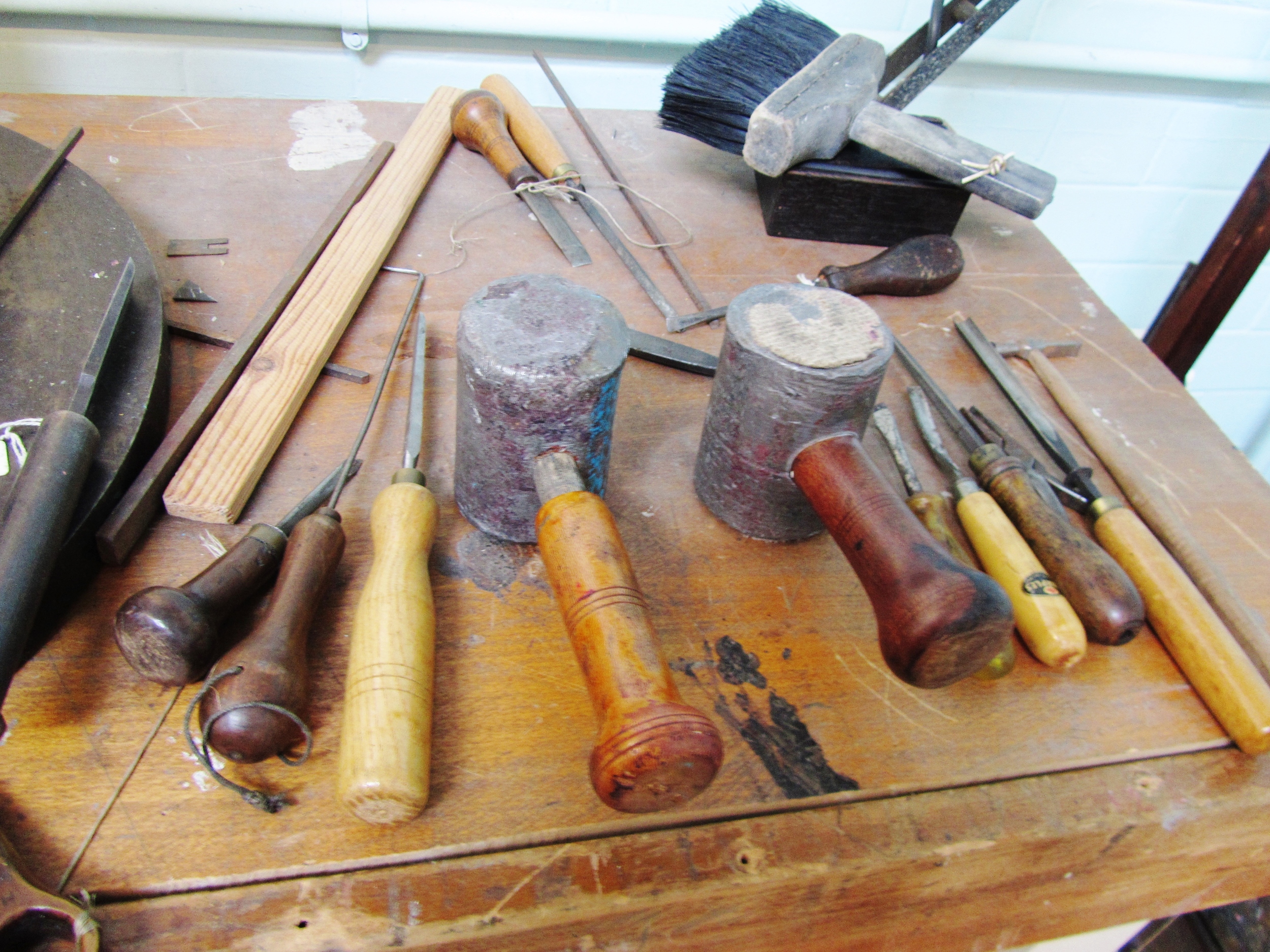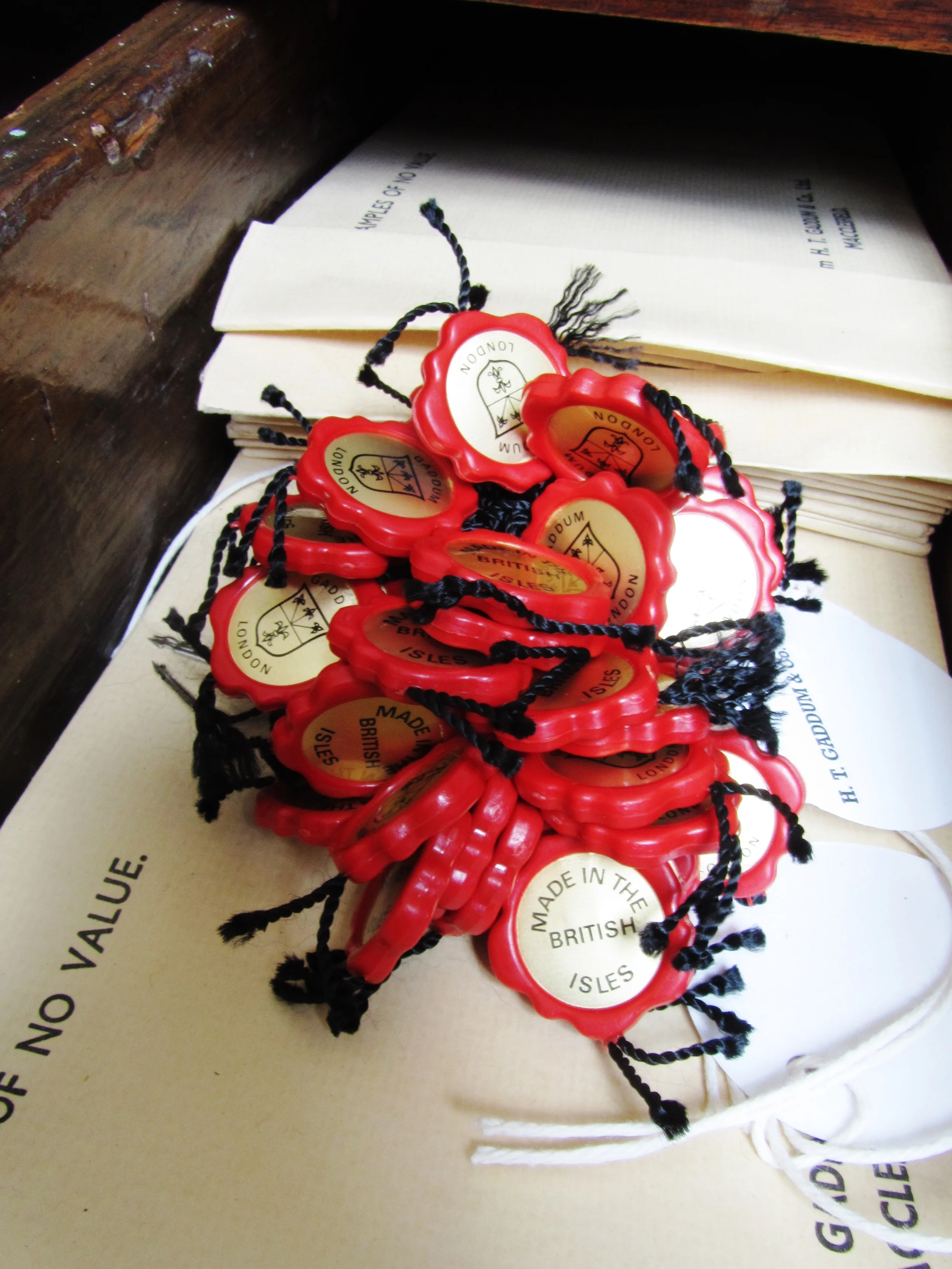The recent eye-catching display of my favourite art shop, Cornellison & Son ( a trove of amazing traditional materials, professional pigments and art supplies, estd 1855!) to accompany their array of gilding materials.
Ancient gold jewellery from Manchester Museum's Ancient World's exhibition.
"Gold-the most universal of archetypes. It's allure gleams in liturgical traditions and Pagan rituals, royal celebrations & alchemical transformations. The splendour of this precious metal has limitless visual potential. While it's use can veer dangerously close to signalling excess & kitsch, gold is nevertheless flamboyant & resplendent - a spectacle to behold. Somewhere between elegant & overpowering, it became a catalyst for creativity suggesting the transformation of a raw material into a work of art to be admired." Dries Van Noten exhibition, the Decorative Art Museum, Paris
Golden garments, at Dries Van Noten's current Paris exhibition including a beautifully embroidered antique piece.
What I like about gold is the fact that it's NATURALLY OCCURRING, which I think can be forgotten because of it's expense. Valued since it's discovery for it's beauty and rarity, it is also a material with unique properties made up from a combination of ingredients found in the universe. The desire it has created and it's limited availability means it's used as a means of expressing wealth, giving it the reputation for being showy and gaudy. But unlike a wad of paper bank notes for a man made currency, if you found a nugget of gold gleaming amidst the gravel of a muddy stream, or peeking out of a rocky wall it immediately catches the eye as something special irrespective of knowledge of it's outside "worth". Real gold is a wonderful material to work with but causes creative limitations by it's expense. I love pyrite (fool's gold) which as well as having it's own unique qualities also shares some of the appeal of the treasured material. It's natural, it sparkles, it's warm and shiny, I WANT IT on a deep level. And I can work with it creatively on my artist budget and use larger pieces to make a big impact with objects in this lovely, sunny metallic hue. Yuuuuum.
An pyrite specimen I used recently for a bespoke ring.
Hubert Duprat's beautiful jewelled insect homes I saw in the Dries Van Noten exhibition in Paris last month.
A wonderful surprise at the Dries Van Noten exhibition was the inclusion of Hubert Duprat's amazing caddis flies which I had never seen in real life before! I love the way he has used jewels and precious materials in this way, showing them as natural things. To us, we know how "expensive" they are in our society, but to the caddis lavae they are just a handy building material to make their little home. In a similar way, the pearl is known to us as a rare find in the watery depths, romantic, elegant and precious. However, to the oyster it is a way of dealing with an annoying speck of grit so it doesn't damage it's delicate insides, a biological process.
Pearls at The Museum of London
These are animals protecting themselves in beautiful ways.
A new exhibition has also just started at The Manchester Museum, From the War of Nature. Coinciding with the commemoration of the start of World War One, the exhibition looks at " the story of predation, competition, co-operation and collaboration... (revealing) that living things resolve conflict in many, often unexpected, ways and aims to challenge the perception that war is an inevitable outcome of conflict." I say hopefully we can form a pearl of wisdom out the irritating grit that gets in our shells. :)


































